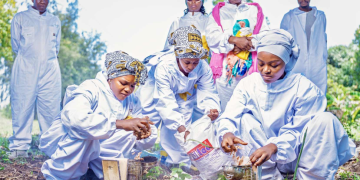Developing a multi-stakeholder platform to ensure continued progress and sustained commitment
To advance the development of a value chain, a multi-stakeholder platform (MSP) was established. In the field of traditional medicine, it included representatives of local communities, traditional practitioners and/or small enterprises, researchers, and national government actors.
The first meeting introduced participants, clarified their roles and contributions, and allowed space to discuss interests, expectations, needs, and challenges. It also served to define strategic directions and a shared vision for the platform.
In a second workshop, stakeholders were trained by experts in the valorisation of traditional medicine- from plant to product- covering sustainable use, market access, toxicity testing, quality standards, and other key steps in building a viable value chain.
The third MSP meeting focused on building trust through intensive dialogue and the development of a joint action plan as well as a written agreement outlining each group’s roles and responsibilities.
The process was supported by a study on the availability and sustainable use of selected medicinal plants.
Joint results were presented to the Ministry of Environment during a public event with all stakeholders, media, a mini-exhibition, product displays, and a short video featuring community feedback.
Key success factors included: a series of interactive workshops with sufficient time for a deep exchange on roles and responsibilities; eye-opening inputs from expert from local and West African practitioners on all the requirements to valorise medicinal plants; open and honest dialogue fostering trust; a high-level event to showcase results in front of the minister of environment and the TV; and the patience and dedication of moderators ensuring all voices were heard and respected.
Creating a multi-stakeholder process, especially one involving local communities, requires time and well-structured, interactive sessions. Continuity through regular workshops is essential. Moderators must ensure ongoing engagement, respect all voices, and value each contribution. Activities like valorisation training, offering new insights, are vital.
Joint plans and written agreements are only possible once trust has been established. This trust requires repeated, open, and sometimes intense discussions. For example, defining roles led to deep exchanges between communities, traditional healers, and researchers. As communities realized they had need to contribute, even share protected knowledge, fears had to be voiced - and some discussions ran until 10:30 p.m. These moments were crucial to clarify short-term outcomes and what needs more time.
The government’s role remained a point of contention, as national authorities saw themselves not as partners, but as decision-makers due to their financial role.
